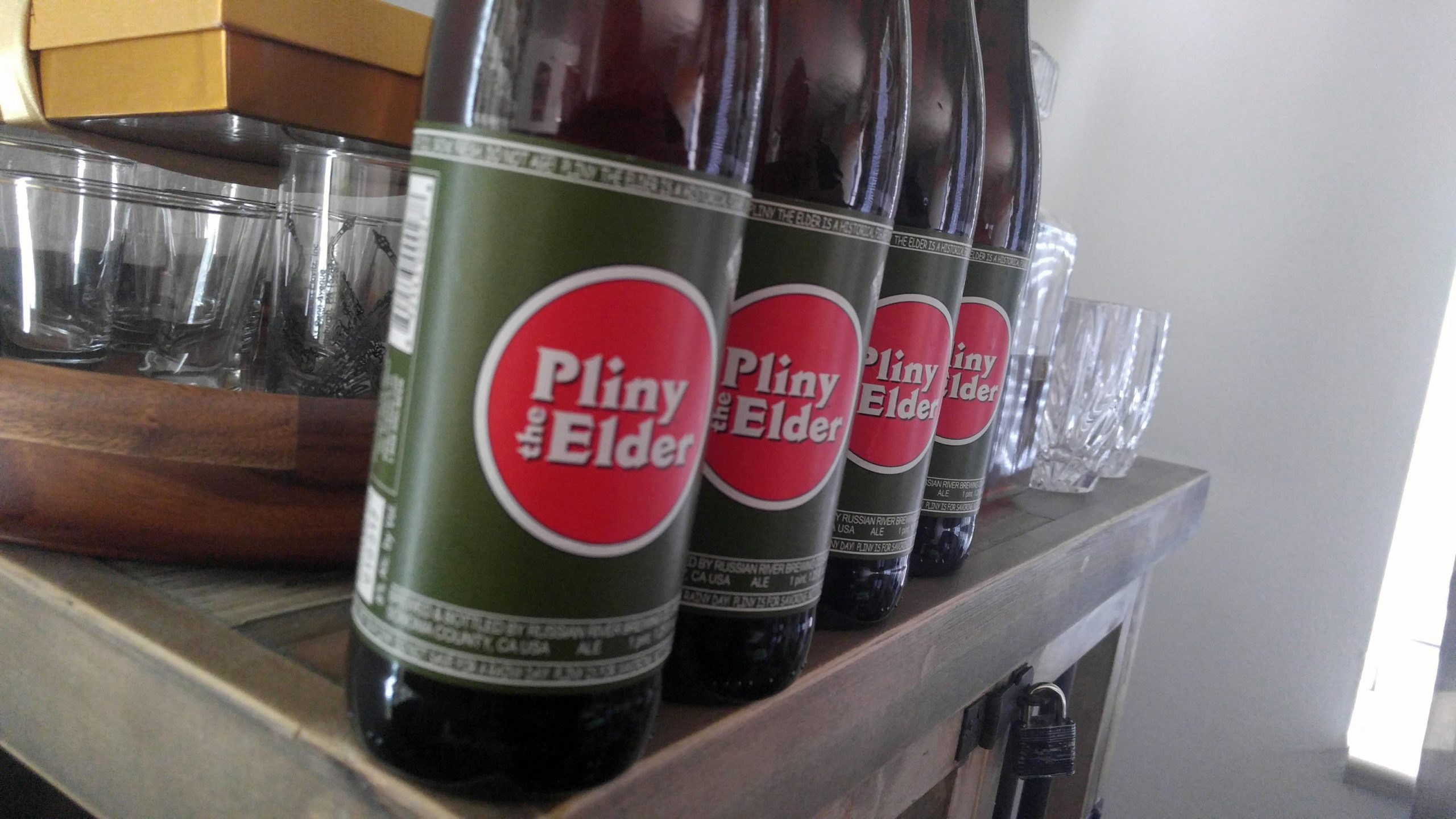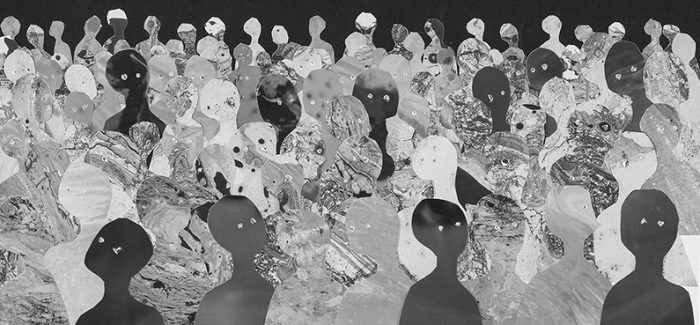Ultimate 6er | The Gloom Index of Radiohead
“We live in strange times,” Thom Yorke said to Stephen Colbert in 2019. “It’s not my fault.”
If you’re a Radiohead fan to any degree, please read on. You may be fond of this article, but not in love. Calm. Read at a better pace; slower and more calculated. Become an informed member of society. No longer empty and frantic. Be prepared to nerd out.
All events this year have been overshadowed by the propensity of 2020 to take an absolute crap on everything. Apartment dwellers and homeowners alike feel more like Pact Sardines in a Crushed Tin Box than ever. When you think about it, it’s the perfect year for Radiohead frontman Thom Yorke to get married. It’s an ironic, “hell’s freezing over” moment that signals Yorke’s rise from perpetually anxious doomsday prepper to a fitter, happier, more productive and comfortable pseudo-human. Yorke also recently celebrated his 52nd birthday on October 7. So that’s something.
Kid A
This tumultuous year also marks the 20th anniversary of the release of “Kid A.” If you weren’t old enough to appreciate/loathe the album in 2000, you may not understand what a paradigm shift “Kid A” was for both Radiohead and the rock music world-at-large. The band was hot off “OK Computer” — which won a Grammy for “Alternative Album of the Year” in 1998. Thom Yorke was exhausted, and a bit tired of performing. The band needed to go in a different direction.
The initial reaction to “Kid A” was one of confusion for a lot of people. “What the f*ck are all these bleeps and bloops?” Radiohead definitely had an electronica vibe that underpinned much of its music, but “Kid A,” with its odd time signatures and strange noises, was a departure from almost all semblance of rock. Underneath all of the electronic experimentation — reminiscent of what Pink Floyd was doing in the ’60s and ’70s — “Kid A” was an extremely well-done and expertly articulated album that has long since secured its place as one of the best albums ever recorded (Rolling Stone recently ranked it #20 in its “Greatest Albums of All Time” list.)
From “Pablo Honey” to “Moon Shaped Pool,” one thing has been omnipresent across all of Radiohead’s music: Gloom. But is the music really that depressing, or do we just live in a world that so desperately craves bubble-gum happiness that anything with a tempo lower than 120 BPMs feels too sad?
Fortunately, we have a way to scientifically discuss this.
The Gloom Index [Data-Driven Depression]
A few years ago, Radiohead fan and statistical data analysist Charlie Thompson created an algorithm and accompanying visual aid that shows the intensity of “gloom” for every Radiohead song.
Thompson went about this by starting with Spotify’s built-in metrics. One of the metrics is called “valence,” which measures how happy or sad a song sounds from a musical perspective. Valance alone isn’t enough to analyze a song’s sadness, so Thompson also devised a way to pull lyrical data using Genius Lyrics. From there, he was able to quantify the happiness/sadness behind each song’s lyrics and measure that against each song’s lyrical density.
Altogether, the Gloom Index equation looks like this:

The higher the number, the happier the song. Check out this page for a much more in-depth explanation of how the data is created, if you’re into that sort of thing.
The End Result
Tap/hover over each point on the graph and see where each song rates on the Gloom Index.
Beer Pairing: Methodology
After being exposed to such an intriguing use of data to analyze music, my inner beer geek logically wanted to see how this information could be used in conjunction with alcohol. When considering the song and beer pairings, the following parameters were taken into consideration:
- To sample as many different albums as possible, any given Radiohead album is only represented once in this Ultimate 6er.
- To utilize the broadest spectrum of the Gloom Index possible, the songs that ranked the highest and lowest on the Index, respectively, are used.
- From there, the remaining songs were chosen from each significant range on the Index: 11-30, 31-40, 41-50 and 51-60.
- When deciding on a pour list for a whiskey tasting, it’s often recommended that you start with the lower-proof whiskies first so you don’t blow everyone’s taste buds out halfway through the tasting. The same idea is being applied here. The lighter beers will be paired with the happier songs, the heavier beers are paired with sadder songs: 0 – 4.9%, 5 – 6.9%, 7 – 8.9%, 9 – 10.9%, 11 – 12.9% and 13%+.
Everyone Pairs Beer and Music. This is Not News.
Yes, we already instinctively pair beer with music on a regular basis. But the connection between a specific kind of beer and a specific kind of music is unclear. Why are dive bars with domestic beer on tap more likely to have classic rock cover bands? Why are Colorado tap rooms full of bluegrass and Americana? For now, we can merely make educated guesses. Regardless, it is this scientific spirit that leads us to hypothesize that a sadder song may vibe better with a stronger beer, and a happier song is best enjoyed with a more crushable beverage (although maybe it’s the other way around).
We’re Already Sad. We Don’t Need More Sad.
Pairing the saddest songs ever with beer might seem like a disastrously bad idea. But listening to sad music can actually make you feel better. Some scientists believe that this is because sad songs/movies/shows prepare our body, via hormones, for a sad or traumatic event. When that traumatic event doesn’t happen, our brains are filled with leftover opiates that have nothing to do but bounce around your body and make you feel nice.
Another theory is that binging on sadness in the form of art is therapeutic and handled much differently by the brain than actual sadness. Whatever the science behind it, this stuff is a lot more fun to talk about and think about than the shit that’s been in the news lately, so that in itself should be a mood boost. Let’s get to it.
Pinner IPA| Oskar Blues Brewery
Song: 15 Step
Album: In Rainbows
Gloom Index: 100
Beer ABV: 4.9%
You used to be alright, what happened?
Did the cat get your tongue?
Did your string come undone?
Far and away Radiohead’s “happiest” song on the Gloom Index, “15 Step” may live in Radiohead fan infamy for being used in the end credits of “Twilight.” It’s still surprising that the notoriously anti-establishment Radiohead would lend their tune to such a mainstream piece of media. But, evidently Yorke’s a bit of a vampire buff.
Oskar Blues’ story follows a similar trajectory as Radiohead’s career early on. OB started out as a small microbrewery with local blues music and a few beers on tap. It evolved into one of the most successful and loved craft breweries of all time.
Later on, the philosophies start to diverge, although with axiomatically increasing success. Oskar Blues-owned CANarchy was a leap into big-craft consolidation; a new conglomerate of craft breweries created (as some will argue) for survival in an ever-uncertain industry. Conversely, Radiohead freed themselves from major label EMI after “Hail to the Thief.” Their next album, “In Rainbows,” was famously sold independently on Radiohead’s own website for “whatever you wanted to pay.”
Despite the split from their major recording label, Radiohead still plays songs from their EMI days at nearly every live performance. If you want to stay in the spotlight, you do have to give the fans what they want, sometimes. The same goes for Oskar Blues’ Pinner IPA — it disappeared for a while, but after a long and noisy request for an encore, the super sessionable IPA made its comeback this year.
A Pale Mosaic | Hops & Grain Brewing
Song: Nice Dream
Album: The Bends
Gloom Index: 57.42
Beer ABV: 5.93%
They loved me like I was a brother
They protect me, listen to me
They dug me my very own garden
Gave me sunshine, made me happy.
This is a spacey Radiohead song that harkens back to the band’s more rock-heavy songwriting. “The Bends” overall is an underrated album, but it also may be Radiohead’s most influential. It also contains maybe the greatest song of all rock history: “Fake Plastic Trees.” For all the turbulent, crunchy edge of its mid-song guitar bridge, “Nice Dream” is dominated by a gentle, melancholy chord structure with beautiful and sweet vocals over the top. When this song was recorded, the band attempted to recreate the ambiance of George Harrison’s “My Sweet Lord.”
In honor of Radiohead’s virtual appearance at ACL Fest 2020, a beer from Austin seemed appropriate.

Since A Pale Mosaic’s not available everywhere in the country (it usually makes its way to Denver during GABF, which also didn’t happen this year), you can enjoy it the same way that people enjoyed most things this year: Vicariously through technology. With a malty base, clean piney and citrus flavors, and an easy-drinking 5.93% ABV, you could burn through a six-pack of this American IPA pretty effortlessly.
Pliny the Elder | Russian River Brewing Company
Song: 2 + 2 = 5
Album: Hail to the Thief
Gloom Index: 47.4
Beer ABV: 8%
It’s the devils way now/There’s no way out
You can scream and you can shout/It’s too late now
Because you have not been paying attention.
As we descend 10 points deeper into gloom, a more modernly recognizable Radiohead starts to emerge. The album “Hail to the Thief” was a jab at then-president George W. Bush, who many people felt was unjustly awarded a second term with the help of Florida and the Supreme Court. The song “2 + 2 = 5” falls in line with the albums Orwellian motif, in which we’re all being force-fed incorrect answers to questions, much like Big Brother does with the main protagonist in “1984.”

The craziness that thus far has been the 2020 presidential election has us thinking about Pliny for President, Russian River’s double dry-hopped Double IPA. Unfortunately, Pliny for President is limited in availability. The original Pliny the Elder, however, is more widely available than it ever has been. Born in 2000 (same as “Kid A”), Pliny’s rise and fall in popularity illustrate the fickle world of trend-following. Much like many Radiohead albums, Pliny was revolutionary for its time. People are quick to dismiss Pliny now because there are so many great beer options available, but it’s still a solid brew that forever changed the way people think about beer.
Hoppy, bitter, fresh and consistent, this Double IPA is West Coast all the way and as long as your expectations are tempered, it should stay on your beer bucket list.
90 Minute IPA| Dogfish Head Craft Brewery
Song: Kid A
Album: Kid A
Gloom Index: 33.46
Beer ABV: 9%
I slip away/I slip on a little white lie
We’ve got heads on sticks/You’ve got ventriloquists
Standing in the shadows at the end of my bed
Rats and children follow me out of town/Come on, kids.
Originally thought of as “commercial suicide,” the band’s fourth studio album has since become the album that critics and fans talk about most often. When “Kid A” came out, it was controversial — not because of its content, but because the initial reaction inspired such a wide array of feelings. We were Generation X growing up with a quintessential Gen X band, who abruptly decided they didn’t want to sound like the ’90s anymore. It was an awakening in a lot of ways, and it set the tone for an entirely new, weird millennium of music.
When Boston Beer Co. bought Dogfish Head, there were similarly mixed reactions among craft beer fans. On one hand, the merger of two large beer makers felt out-of-sync with the spirit of craft beer, much as Kid A felt out-of-sync with the spirit of rock music. On the other hand, when we’re allowed to go to ballparks again, we’ll have a few more palatable options on tap without completely selling our collective souls to the devil. When you talk about the greatest albums after the year 2000, it’s impossible to have that conversation without Radiohead. When you’re looking at beers in the 9% ABV range, it’s hard to have that conversation without 90 Minute IPA.
The beer has enough malt to stop it short of being an absolute hop-bomb, but it is definitely a relic from the “we can make a hoppier beer than you” days. This robust brew has been a longtime top-10 for IPA lovers around the country.
Barrel-Aged Yeti Imperial Stout | Great Divide Brewing Co.
Song: Exit Music for a Film
Album: OK Computer
Gloom Index: 14.57
Beer ABV: 12.5%
You can laugh a spineless laugh
We hope your rules and wisdom choke you
Now we are one in everlasting peace
We hope that you choke, that you choke.
Music is subjective. But I still feel confident saying that this song, objectively, is one of the most beautifully sad and powerful songs ever written. It’s got that “save a life” quality about it, where you can imagine yourself scream-singing the peak of the song in a downpour with tears in your eyes, falling completely apart, and coming out of it feeling brand new.
When Radiohead fans say “I miss albums like OK Computer,” it’s precisely because of how songs like “Exit Music” can make someone feel. There’s a reason that we never outgrow some songs. Once a song saves your life, it’s saved your life forever. There’s a reason we pine for the classics, even though we’re able to appreciate something new.

Along those lines, Great Divide’s Barrel-Aged Yeti Imperial Stout comes to mind. We’re getting pretty deep into the Gloom Index in this point, so we’re jumping up a few notches in ABV as well. Great Divide’s standard Yeti Imperial Stout offering is an OG of craft beer; it introduced many Americans to Imperial Stouts for the first time. The barrel-aged version is a boozier and more robust brew that Great Divide fans look forward to every year.
Double Cinnamon Double Avarice | River North Brewery
Song: True Love Waits
Album: Moon Shaped Pool
Gloom Index: 1
Beer ABV: 17%
I’ll drown my beliefs/To have your babies
I’ll dress like your niece/And wash your swollen feet
Just don’t leave/Don’t leave.
It is, in no way, difficult to see how this is one of Radiohead’s most depressing songs. With an abysmal 1 on the Gloom Index, “True Love Waits” is very high in the running for saddest song ever written. As with all Radiohead songs, there’s a certain beauty in the sadness. Thom Yorke manages to really squeeze the sadness out of every last word in this song and aim for maximum despair.
Although this song was originally a B-side from “OK Computer,” it’s got a more logical place on “Moon Shaped Pool” and seems to blend better on the quintet’s most recent album than with its paranoid, angsty predecessor.
https://www.facebook.com/rivernorthbrewery/photos/a.410883568964489/3282023301850487/
If you’re going to dive deep into the lyrics of “True Love Waits,” it makes sense to do it with a very strong beer. Double Cinnamon Double Avarice sounds like it would be too aggressive on the palate by name alone. But the two types of cinnamon (Ceylon and Cassia) aren’t overwhelming; they complement the chocolatey, roasted malt flavors of the boozy Imperial Stout and offer the consumer a spicy, complex, but well-balanced experience.
Make Your Own Morose Mixtape
In the course of Charlie Thompson’s work, he also developed a program that will allow you to see where other songs land on a simpler index that includes four quadrants: Turbulent/Angry, Happy/Joyful, Sad/Depressing and Chill/Peaceful. Give it a try. If you’ve read this far into this article chances are it’s something you’d enjoy.
Feature image stolen from Radiohead’s website because they definitely don’t care.









Submit a Comment